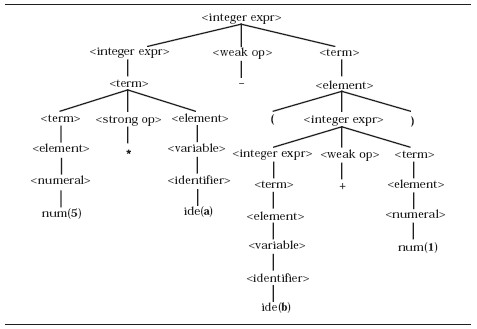Slide 4.1: Translational semantics
Home

|
Slide 3.4: Abstract syntax Slide 4.1: Translational semantics Home |

|
A parse tree for the expression “5*a-(b+1)” of Wren is given on the right.
Two possible abstract syntax trees for the expression are given below.
|

|
